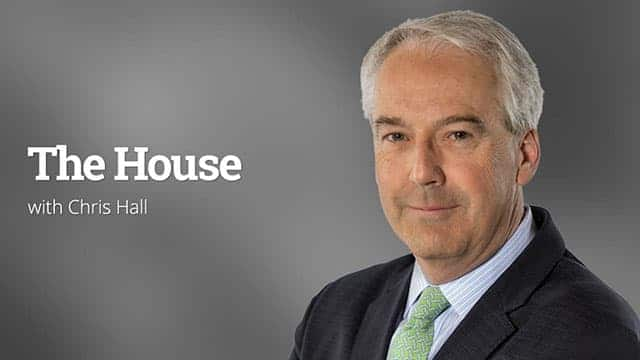Canada’s military readiness is suffering from a lack of investment and the federal government must ensure that desperately needed new money actually gets spent, experts in defence and procurement say.

Canada’s military readiness is suffering from a lack of investment and the federal government must ensure that desperately needed new money actually gets spent, experts in defence and procurement say.
“You can promise the moon and the stars. If you can’t get the money out the door then it’s of no value,” said Andrew Leslie, a former Liberal MP and retired general.
In a segment that aired Saturday, Leslie told CBC’s The House that the Liberal government under Prime Minister Justin Trudeau has failed to provide the leadership needed to break down bureaucratic barriers and push through major spending to revitalize the Canadian Forces.
The federal government is set to unveil its budget on April 7. One key question will be what changes it makes to military spending, especially in light of the war in Ukraine.
LISTEN | Military experts discuss Canada’s future defence spending needs:

8:29The plea for two per cent
Senior producer Jennifer Chevalier speaks to defence experts Dave Perry, Andrea Charron, Kim Richard Nossal and retired Lt.-Gen. Andrew Leslie to hear their shopping list for the Canadian military ahead of next week’s federal budget. 8:29
Canada spends $23.3 billion on the Department of National Defence, but Leslie said the department has a chronic problem with actually using the funds.
“Over the last seven years, the Armed Forces has been allocated roughly that amount but it hasn’t been able to spend it all. And the blame for that lies squarely with the prime minister and the minister of finance,” he said. Leslie, recruited in 2015 as a star candidate to write the Liberals’ defence and foreign policy platform, is now disillusioned with the government procurement abilities.
The Armed Forces are also having difficulties recruiting and retaining personnel — one of the issues top soldier Gen. Wayne Eyre said the Forces would focus on — and Leslie said $1 billion a year could be spent just on salaries to eliminate staffing shortages.
According to Kim Richard Nossal, a procurement expert with Queen’s University, the military is also suffering from difficulties with developing and maintaining expertise in procurement negotiations.
“One of the difficulties that Canada has been in is that that we have tended to purchase military equipment in a kind of boom and bust cycle,” he said.
“And the difficulty with this boom and bust approach to purchasing equipment for our armed forces means that in those lean years, the individuals within the Department of National Defence who have expertise in negotiating procurement simply aren’t there.”
Leslie said the failure to spend the money to bring the Forces up to snuff was of critical importance to Canadian security.
“That’s why, quite frankly, if the prime minister and the minister of finance can’t solve this logjam of spending money on defence, then maybe it’s time for another team to replace him,” he said.
Focus on continental defence
Leslie provided a long “shopping list” of equipment that the Armed Forces needed to procure, including anti-armour and anti-air systems, drones, submarines and aircraft.
But when it comes to directing how money is spent, the government needs to sort out a more fundamental question, according to the president of the Canadian Global Affairs Institute.
“The first question would be, well, what does the government want us to actually do?” said Dave Perry, president of the independent foreign policy and defence think-tank that has occasionally received event sponsorship from defence contractors.
Perry said the image of the military used to be one focused on peacekeeping, but the direction the Forces are supposed to take is less clear now.
After that, Perry said the first step “would be for the government to actually make a decision about whether or not spending the money is a priority or not.
“I don’t think there’s been much evidence that it has been for this government.”

Continental defence should be the main concern for the government, according to Andrea Charron, director of the University of Manitoba’s Centre for Defence and Security Studies.
“Russia is a persistent proximate threat to North America. And we know that China has growing capabilities and ambitions. I don’t think the status quo is going to keep us safe,” she said.
Charron said modernizing the NORAD air-defence partnership was key in that approach, including investments in surveillance, cyber capabilities and recruitment.
Not leaning into Canada’s end of the NORAD partnership meant the country would be letting down not just the U.S., but the rest of NATO too, she said.
“It means that we are a liability for our allies and partners in Europe, and it means also that we are going to struggle to be able to project force from North America into the world if we are held at bay here,” Charron said.
Charron hypothesized that in a situation where Russian President Vladimir Putin lashes out in the Arctic, “the last thing we want is NATO allies in Europe to have to pivot, to come and help Canada and the U.S. at a time when they are focused on what’s happening on their eastern border with Ukraine.”
Overall, she said the military is now being asked to perform multiple different types of missions, stretching its resources thin as outside threats are growing in the form of Russia and China.
“We are run off our feet,” Charron said. “The Canadian Armed Forces is being asked to change the tires on a car that is still moving and that is very messy.”
- Listen to CBC Radio’s The House: Canada to the defence

